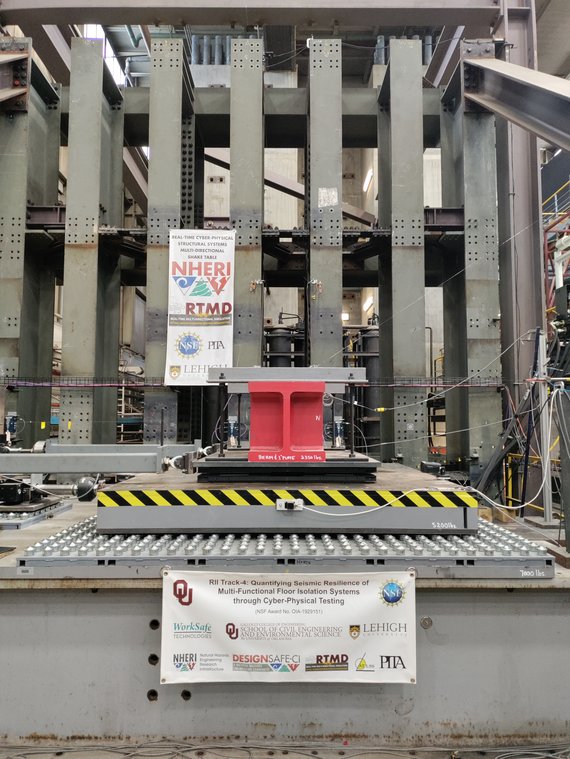CMMI 1943917 - PI Philip Harvey, University of Oklahoma
This Faculty Early Career Development (CAREER) grant will advance the design, analysis, and implementation of seismic isolation solutions for buildings, overcoming existing limitations to ensure post-earthquake functionality of mission-critical equipment in essential facilities. Essential facilities, such as emergency response centers and hospitals, must remain operational during and after an earthquake for the public welfare and safety. Seismic isolation systems, such as rolling isolation platforms, are a viable means of protecting individual components or groups of equipment within such facilities. These systems, however, presently suffer from limited displacement capacity and no protection from vertical excitations, diminishing their performance under strong tri-directional earthquake-induced floor motions. This research project will develop a multi-objective, risk-informed framework to optimize 3D isolation systems, advance the mathematical modeling of passive 3D isolation systems designed using the framework, and experimentally verify the predicted performance under tri-directional seismic loading. This new knowledge, coupled with improved design tools, will allow practicing engineers to better understand the behavior of these systems and to pursue innovative strategies to mitigate damage to vital equipment, thus reducing the vulnerability of the nation's essential facilities. The research plan will be woven into educational activities aimed at promoting diversity in engineering and creating hands-on educational opportunities for K-12, undergraduate, and graduate students through a low-cost, educational shake table module. Project data will be archived and made publicly available in the Natural Hazards Engineering Research Infrastructure Data Depot (https://www.DesignSafe-ci.org). This project contributes to the National Science Foundation role the National Earthquake Hazards Reduction Program.
The overarching objective of this research is to advance 3D seismic isolation strategies through a deeper understanding of their underlying physics and to optimize, evaluate, and validate their performance. This research will answer fundamental questions related to (a) how the uninterrupted operation of essential facilities and their contents can be reliably ensured under tri-directional earthquake excitations of various intensities from frequent to rare events, and (b) how the performance capacity inherent to equipment isolation systems can be augmented with innovative materials and optimization approaches. The specific tasks of the project are aimed at: (1) characterizing 3D seismic hazards to critical building contents and defining risk-based performance objectives for these components; (2) discovering and realizing optimum nonlinear restoring and damping forces for passive 3D isolation systems composed of rolling pendulum bearings and quasi-zero stiffness isolators that exhibit response-based adaptation; (3) experimentally validating physics-based mathematical models of these protective systems for use in design to capture the complex behavior that occurs under seismic loading; and (4) establishing a design framework to facilitate the direct transfer of this concept to engineering practice.
